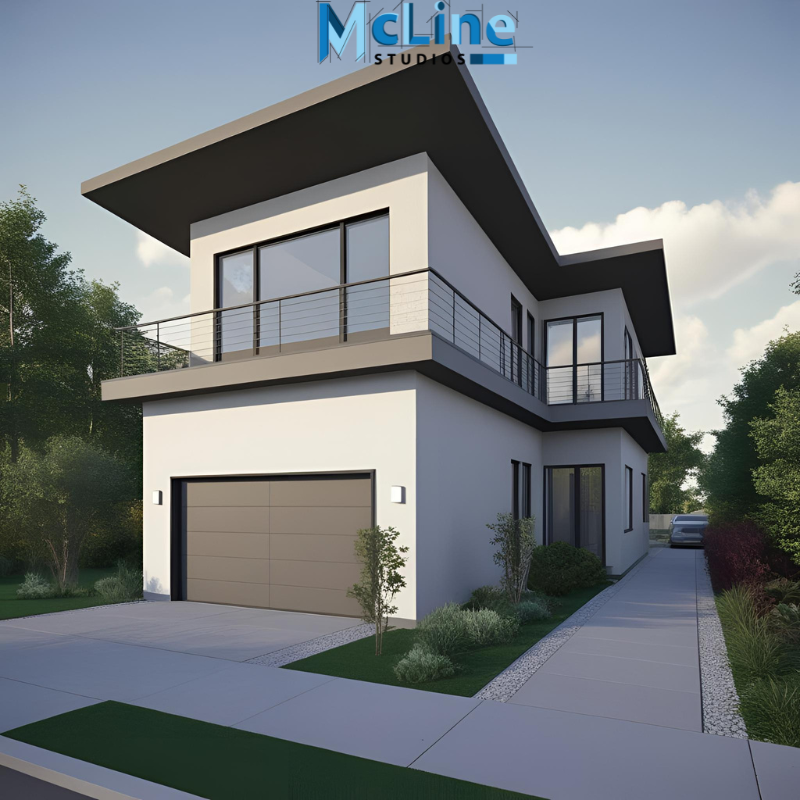When working on large-scale projects in Revit, managing file performance becomes a critical challenge. One of the key strategies to keep your models efficient and responsive is to build lightweight Revit families.
Lightweight families not only reduce file size but also improve loading times, simplify collaboration, and minimize crashes during complex workflows.
In this guide, we’ll explore practical techniques and best practices for creating streamlined, efficient Revit families that maintain essential detail without overburdening your project, helping you optimize both your design process and project outcomes.
Understanding Revit Families and Their Impact on Project Performance
Revit is a popular software used in architecture and construction for creating building designs. One important part of Revit is called Families. Families are like building blocks or templates that help create different parts of a building, such as doors, windows, furniture, or even walls. Each family has its own set of properties and behaviors.
Using the right Revit families can make a big difference in how well a project runs. Good families are easy to use, load quickly, and help create accurate designs. On the other hand, poorly made families can slow down the software and cause mistakes in the project.
When families are too complex, with many unnecessary details, they can make the project file very heavy. This causes the program to work slower and makes it harder for team members to work together smoothly. It can also increase the risk of errors and crashes.
To improve project performance, it’s important to use simple and well-organized families. Designers should avoid using overly detailed models for small parts and instead focus on what is needed for the design. Cleaning up families by removing extra parts or simplifying geometry helps keep the project fast and efficient.
In summary, understanding Revit families and choosing the right ones can help save time, reduce errors, and make teamwork easier. It improves the overall quality and speed of building projects, making Revit a more powerful tool for architects and engineers.
Key Principles of Lightweight Family Design
Lightweight family design is a way to create simple and flexible systems that work well in many situations. It is often used in software, architecture, or product design to make things easy to build, change, and use.
The first key principle is simplicity. The design should be easy to understand and use. Complex parts make it hard to maintain or fix later. By keeping things simple, you save time and reduce mistakes.
The second principle is flexibility. A lightweight family should adapt to different needs. It should allow changes without breaking the whole system. This means designing parts that can work in many ways or be changed easily.
The third principle is modularity. The design should be divided into small, independent parts. Each part does one job well and can be replaced or updated without affecting others. This makes the system stronger and easier to improve.
Another important principle is efficiency. Lightweight designs use fewer resources, like time, money, or materials. This means the system is faster, cheaper, and more energy-friendly.
Lastly, reusability is important. Good lightweight designs allow parts to be used again in different projects. This saves effort and helps keep the quality high.
In summary, lightweight family design focuses on simple, flexible, modular, efficient, and reusable parts. By following these principles, you create systems that are easy to build, change, and maintain, making life easier for both creators and users.
Planning Before You Build: Best Practices
Building something new, whether a house, a shop, or even a small project, starts with good planning. Planning before you build helps save time, money, and avoids mistakes that can cause problems later.
The first step is to clearly know what you want to build. Write down your ideas and goals. Think about the size, shape, and how the space will be used. This helps make sure everyone understands the plan.
Next, do some research. Check local rules and laws about building in your area. You might need permits or approvals before starting. Knowing the rules early helps avoid fines or having to change your work.
Create a detailed design or drawing of your project. This shows how the finished building will look. It also helps workers understand what to do. You can work with an architect or use simple tools to draw your plan.
Make a budget. List all costs like materials, labor, and extra expenses. Keep some money aside for unexpected costs. A budget helps you avoid running out of money during the project.
Find good people to help you, like builders or contractors. Check their experience and reviews. Good workers do the job faster and better.
Finally, plan the timeline. Set clear steps and deadlines. This keeps the work organized and on schedule.
In short, good planning means thinking ahead, knowing the rules, designing well, budgeting, hiring the right people, and managing time. Following these best practices makes building easier, safer, and more successful.
Modeling Techniques to Keep Families Lightweight
In modeling, especially in software like Revit or other BIM tools, families are groups of objects or components that can be reused in projects. Keeping these families lightweight means making them small and simple so that the project file runs smoothly and quickly.
Here are some easy ways to keep families lightweight:
- Use Simple Geometry: Avoid adding too many details or complex shapes inside a family. Instead, use basic shapes like cubes, cylinders, or simple lines. This reduces the amount of data the computer has to process.
- Limit the Number of Parameters: Parameters control how the family behaves or changes. Using fewer parameters means the family is easier to manage and takes up less space.
- Avoid Nested Families: Sometimes, families contain other smaller families inside them. While this can be useful, too many nested families can make the main family heavy. Try to keep nesting to a minimum.
- Use 2D instead of 3D Where Possible: If a part of the family doesn’t need to be fully 3D, use 2D representations or symbolic lines. This keeps the file size smaller.
- Purge Unused Data: Remove any materials, lines, or details that are not needed inside the family.
The End Note
To sum up, building lightweight Revit families is essential for managing large-scale projects efficiently. By understanding the impact of families on project performance and applying key principles such as simplicity, flexibility, modularity, efficiency, and reusability, you can create streamlined components that keep your models responsive and easy to work with.
Proper planning before building families ensures clear goals, compliance, and resource management, while adopting smart modeling techniques, like using simple geometry, limiting parameters, minimizing nested families, favoring 2D elements when possible, and purging unused data, helps reduce file size and improve performance.
Following these best practices not only enhances collaboration and reduces errors but also optimizes your overall design workflow, making Revit a more powerful and reliable tool for large-scale architectural projects.


